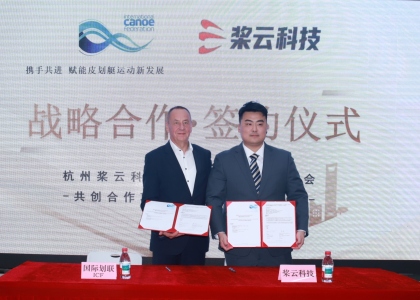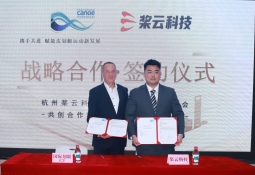Each year since 1985, the IOC provides a trophy with a specific theme based on current trends, the theme for 2015 was “Sport and Innovation”. In the world of sport, innovation can be found across a wide range of activities and areas, among others: Technical development and scientific endeavours allowing a more comfortable, efficient and safe practice of sport – equipment, material, design, etc.
The IOC Trophy is awarded to an individual whose behaviour and innovative ideas have been an inspiration to promote and encourage the practice of sport.
IOC Trophy 2015 – Sport and Innovation was 1st March 2016 awarded to Jaroslav Pollert jr. for his innovative solutions helped significantly shorten the time spent on design and subsequent construction of the Rio 2016 Olympic Whitewater Course situated at Deodoro. Awarding the Trophy is also something extraordinary not only for him but also for all canoeing.
Associate Professor Jaroslav Pollert has been working long-term on issues concerning water structures at the Faculty of Civil Engineering of the Czech Technical University in Prague. As a well-known expert and excellent slalom canoeist (4x World Champion in slalom) he and the University were commissioned by Whitewater Parks International (WPI) in 2015 to assist with completing their design of the course for the Rio 2016 Olympic Canoe Slalom competitions.
WPI’s main design criteria for the overall Deodoro whitewater facility were centered around financial considerations for construction, minimising the operating costs, and providing for a sustainable legacy for the development of water sports in Brazil, as well as speeding up the design process.
Jaroslav Pollert jr. brought to this task several innovative elements and he applied his experience with mathematical and physical modelling. Thanks to his innovations the scientific team created a map with the locations of each obstacle in just five weeks. The map indicated optimum hydraulic characteristics (waves, turbulent water flow, depths, and velocities for both competition and training, etc.). that in turn suggested initial positioning for the adjustable obstacles, in preparation for full scale course tuning.
Special innovative technology (using Nd magnets) helped quickly identify the best obstacle configuration for the course. His innovative solutions helped to significantly shorten the time spent on design and subsequent construction. The course was opened in late autumn 2015 in time for successful test competition in end of November 2015 to be held as scheduled.
For ICF such collaboration with technical academic sphere represents a new dimension for the future of our sport, in that just as we draw from our coaching experts to pursue the best physical training models for our athletes, so should we better rely on collaborations among technical experts who can help develop more efficient and cost-effective sport facilities.
This is especially important to the IOC in ensuring sustainable legacies for such facilities.




